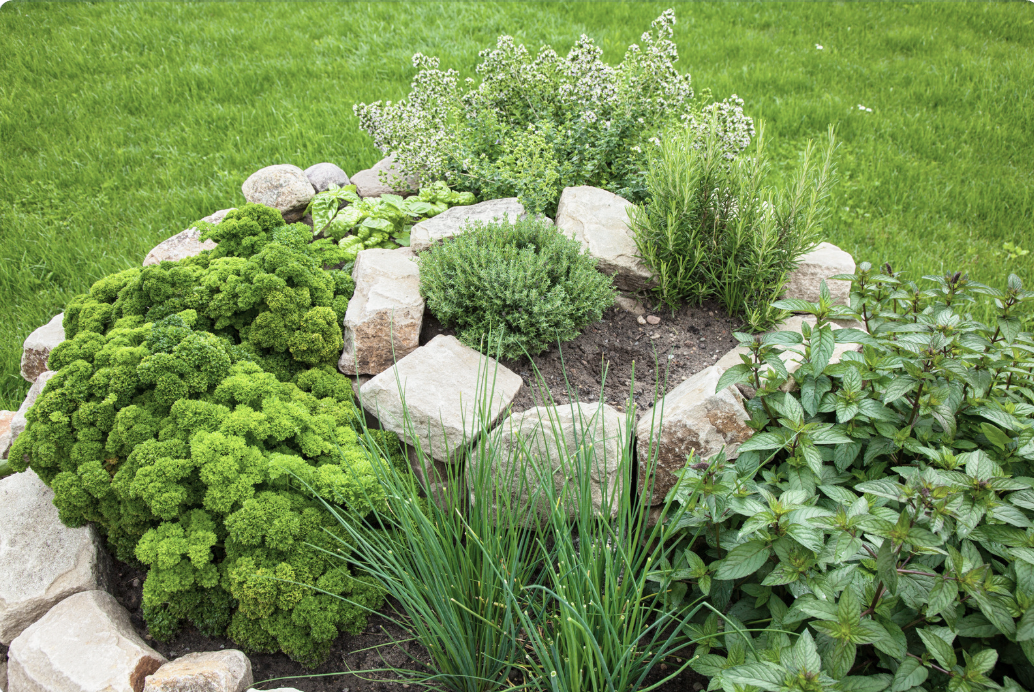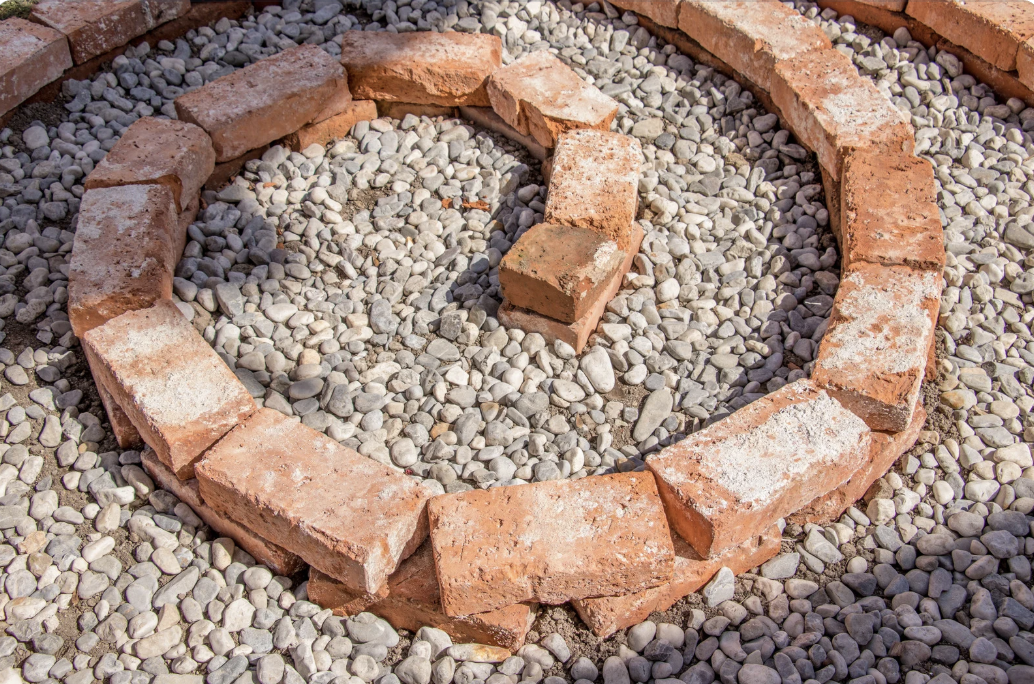The Anti-Inflammatory Herb Spiral Garden
Beauty Meets Healing
Imagine walking into your backyard and harvesting fresh basil, rosemary, oregano and parsley from a single, beautiful garden bed shaped like a spiral. That’s the magic of the herb spiral garden — a classic permaculture design that saves space, looks awesome (if not a little unusual) and creates little “microclimates” so each plant can grow exactly where it feels most at home. Best of all, with the right herbs, your spiral can double as an anti-inflammatory pharmacy you can lean on every day.
Why an Herb Spiral
At first glance, an herb spiral might look like garden art — but its design is rooted in practicality. By building up in a spiral rather than planting flat, you:
Maximize space — grow more in a small area.
Create microclimates — hot and dry at the top, cooler and moist at the bottom.
Improve drainage — perfect for Mediterranean herbs that dislike soggy soil.
Add beauty — the spiral shape becomes a living sculpture in your garden.
Setting It Up: Location & Materials
Before you start stacking stones and piling up soil, a little planning goes a long way. The placement of your spiral will determine how well it thrives, so it’s worth pausing to think about light, water and accessibility. Here’s what you’ll need to get started:
Pick the Right Spot: Choose a sunny location — most culinary and medicinal herbs thrive in 6–8 hours of sunlight.
Mark the Spiral: Use a rope, garden hose or string to outline the spiral shape on the ground (typically about 6–8 feet wide at the base, 2–3 feet tall at the center).
Build the Base: Start with rocks, bricks or reclaimed stones to form the walls of the spiral. These hold soil in place and give the structure its shape.
Add Soil: Fill with a mix of garden soil and compost. For drainage, you can add gravel or sand at the top layers where Mediterranean herbs will sit.
Water Source: Position the lowest part of the spiral toward the north (in the Northern Hemisphere), where it will stay cooler and wetter. If possible, place it near a water source for easy care.
Plant Placement: What Goes Where
The beauty of the spiral is how it mimics natural growing conditions. Here’s where your anti-inflammatory herbs, edible flowers (and garlic) fit best:
Top (Hot, Dry, Full Sun):
Rosemary — loves heat and excellent drainage.
Oregano — thrives in Mediterranean-like conditions.
Mid-Level (Warm, Moderately Moist):
Basil — needs sun and warmth but also appreciates a bit more soil richness.
Parsley — tolerates sun but benefits from slightly cooler, nutrient-rich mid-level soil.
Calendula — likes sun but needs the rich, even moisture the mid-level provides.
Bottom (Cool, Moist, Partial Shade):
Peppermint — loves consistent moisture and shade; the spiral’s base is perfect.
Chamomile — can handle slightly cooler, moist conditions and doubles as both tea and skin soother.
Bottom (Outer Edges):
Garlic — plant cloves along the outer edge on the sunnier side; they prefer well-drained soil and full sun.
Caring for Your Spiral
Once your spiral is built and planted, the real magic comes in how you tend it. A little attention goes a long way — regular watering, light pruning and seasonal adjustments will keep your herbs healthy and productive.
Watering: Water more at the top (dry zone) and less at the bottom, since lower levels retain moisture.
Harvesting: Regular harvesting encourages growth. Snip basil often, trim peppermint to prevent it from taking over, and clip rosemary to keep it bushy.
Seasonal Tips: Mulch in cooler months to protect roots. Garlic is best planted in fall for a summer harvest.
A Living Pharmacy in Your Backyard
Once your spiral is established, you’ll have an ever-ready supply of herbs for teas, infused oils, fresh recipes and soothing remedies. Each layer brings its own gift — rosemary for circulation, basil for antioxidants, parsley for detox, oregano for immune support, peppermint for digestion and garlic for whole-body protection. Tuck in chamomile to calm the mind and ease digestion, and calendula to soothe and restore the skin, and your spiral becomes more than just a garden bed. It’s a living, spiraling symbol of balance and healing — right outside your door.






